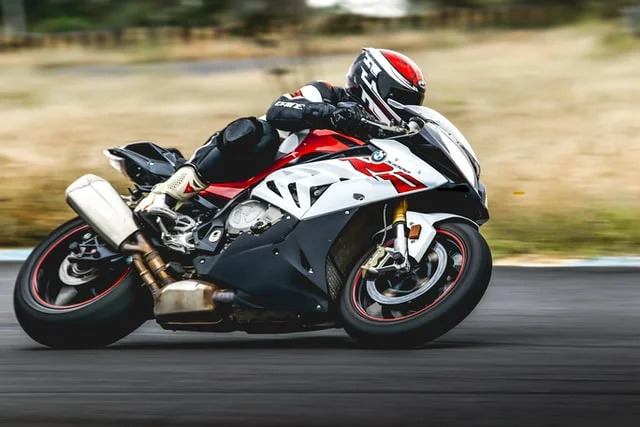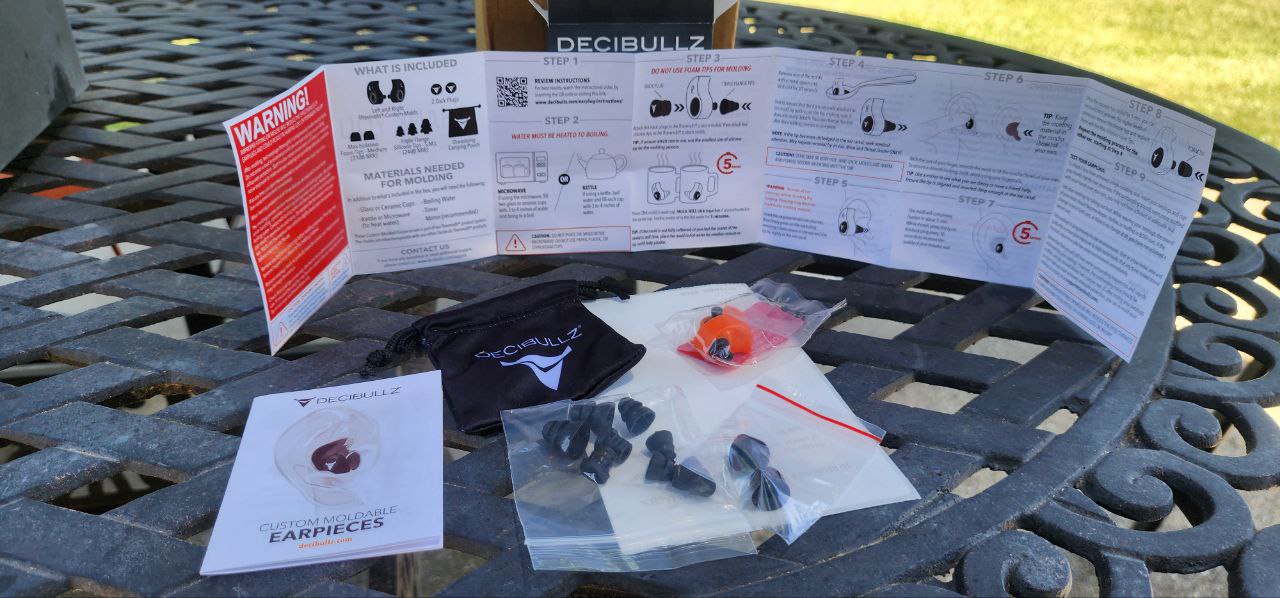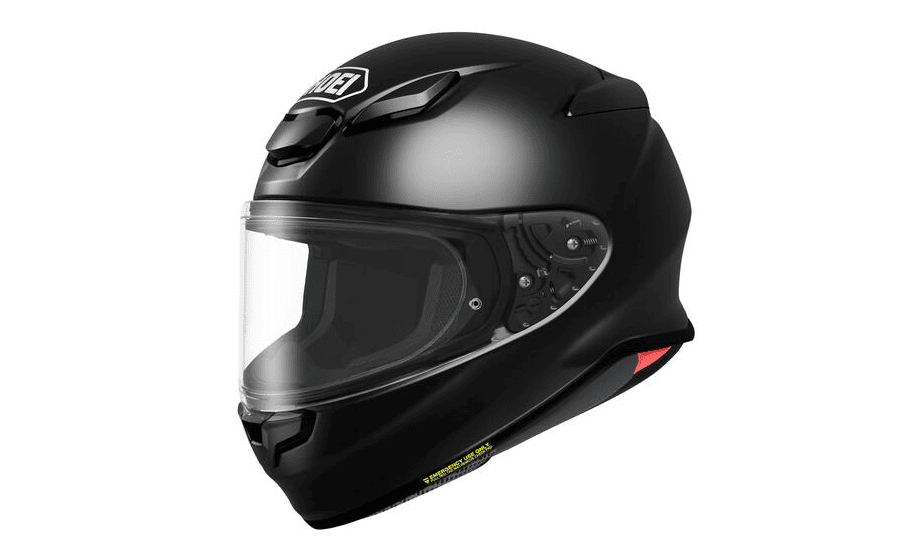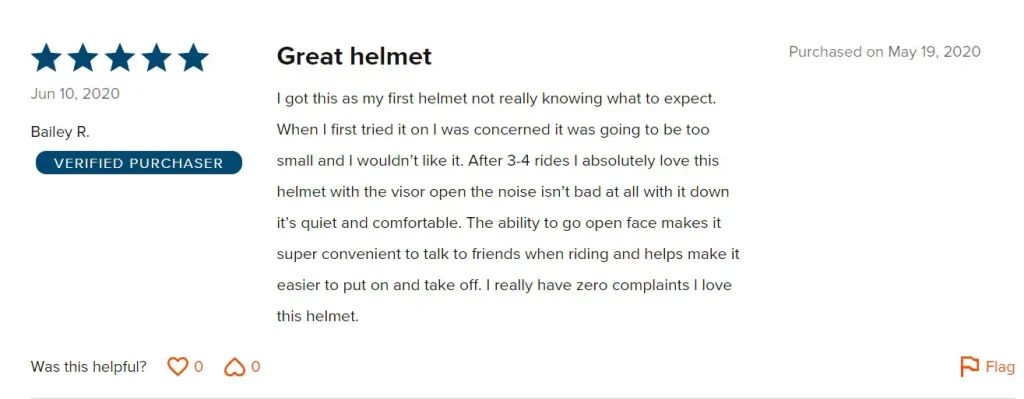
Soundproofing Your Motorcycle Helmet – Expert Tips
left for contents
Feel like your eardrums are going to pop in your lid? Making your motorcycle helmet quieter is not that hard, and doesn’t require you shelling out on a new helmet.
Here’s how I’ve dealt with wind, road, and engine noise in otherwise decent helmets that just needed a bit of modding.
Looking for the quietest motorcycle helmet? : You need to be over here.
Helmet noise reduction isn’t just for comfort either; the noise from your motorcycle helmet can literally be deafening. Your motorcycle’s exhaust alone is somewhere between 80-100 decibels (Db) if stock, but the noise inside a helmet when it’s windy can regularly get up to 100 Db and more.

With one in eight Americans experiencing hearing loss – lots of times due to exposure to loud noises – knowing how to make a motorcycle helmet quieter can have a huge impact.
Got questions? We’re going to answer the most important ones, including:
- Why are motorbike helmets noisy?
- How can I soundproof a helmet?
- What can I do to make my bike quieter?
- Which helmets are the quietest? (from great brands like Shoei, Arai and Shark!)
If you have any more questions, leave them in the comments!
What Causes a Helmet to be Noisy?
Before you go about soundproofing your helmet, it’s handy to know why it’s making the noise at all. Maybe you’ll come up with a technique we never thought of and post it in the comments for others!
The main culprit that makes a noisy helmet is wind. This can be from windy weather or the wind generated as you cruise down the highway.
The wind and fast flowing air around your helmet creates turbulence – the same thing that you’ve probably experienced shaking you around on an airplane. We’re not going to turn into your high school physics teacher here, but basically:
- When air rushes into the visor of your helmet, it’s at a higher pressure than the air in your helmet.
- This creates a kind of vacuum on the other side of the visor, the side your face is on.
- Air from all sides, vents, and from below rushes in to try and equalize the air pressure.

Put simply, the reason you want to make your motorcycle helmet quieter is because it has vents, a neck and chin gap, and other ways for air to rush inside. All of these things cause noise.
However those vents also provide needed ventilation; so how do you balance the need for quiet and temperature regulation? Helmet makers have struggled with this dilemma since the beginning of time.
Every helmet is different, so what sort of things can you do to reduce helmet wind noise?
How to Make a Motorcycle Helmet Quieter
You don’t have to rush out and buy a new helmet just because your current one is noisy. There are a few tried and true ways to make your helmet quieter.
Here are our top helmet noise cancelation tips for you to try.
1. Make a Helmet Quieter with a Good Fit
We promise, we’re not sending you out to buy a new helmet straight out the gate!
If you’re buying a new one anyways, it’s worth knowing what to look out for, though. You want to make sure the helmet fits snug, especially around your neck.
Tip: Read our guide on how to properly fit a helmet.
A well fitting helmet should push against your cheeks and make you slightly chipmunk-like.

Depending on your helmet, you might be able to change the lining, too. Lots of helmet manufacturers make just one or two shell sizes and use different sized linings to size it.
If you’ve got an XL helmet, consider buying the L lining to make it fit better and reduce noise.
2. Soundproof your Helmet with Ear Plugs
If you can’t go to the party, bring the party to you. Or something like that… If you can’t do anything more to reduce helmet wind noise, then you can at least stop yourself hearing it.
Buying a pair of ear plugs is a cheap and easy way to cut out most of the noise from an otherwise good helmet. The key here is to look at the noise reduction rating (NRR). The higher the better since it measures the decibels that should be cut out.
There are four types of ear plugs you can wear when out biking:
- Foam ear plugs are cheap – you can pick them up in bulk packets – they’re generally effective, and will drown out mainly high frequencies. Mack’s Earplugs come highly recommended and knock out up to 33 Db.
- Flanged earplugs are made from silicone or rubber and should form a better seal in your ear. They also last longer and are easier to clean. SureFire EP4 Sonic Defenders work really well and are easy to pull out and not get lost with their attached string.
- Custom molded earplugs are why you see people getting bright goo poured into the ears at track days. They fit your ear perfectly so it should reduce noise really well. You can do your own molding at home with Decibullz Custom Molded Earplugs. Our correspondent Alan Jackson tried these out on his Harley and even in front of a private jet…

- Musicians earplugs are custom made and designed to tune out specific frequencies. You’ll probably not need to go to these lengths to make your motorbike helmet quieter!
On the Decibullz earplugs, our correspondent Alan tested these with his Harley Davidson and in the airport ramp area around a small jet with the auxiliary power unit running, which produces a high shrill noise. In both cases he found that these earplugs did the job of lowering decibels while still allowing him to talk to other people. However, he did mention that foam earplugs in his experience cut out more noise overall, if that’s what you’re going for.
He said the molding process for the Decibullz was easy to follow in the instructions and after some initial fiddling with different ear tips, he was able to remold them to get a perfect fit.
Still got some residual sound you want to cut out from your helmet? Here’s another trick.
3. Clothing to Reduce Helmet Noise
With some simple additions to your biker get-up, you can reduce the wind that rushes into your helmet and reduce the wind noise further.
We know that gaps between your neck and helmet are where a lot of wind comes in.
Make your motorcycle helmet quieter by simply wearing a scarf or neck gaiter and tucking it under your helmet. It’s a cheap, lightweight, and durable way to add padding around your neck.

A balaclava will work in a similar way. Choose a windproof balaclava to reduce how much air can get through the fabric and reduce your helmet noise. This one from Trailside Supply Co should do the job well.
4. Sit Properly and Get Less Wind Noise
The next super cheap and easy option to reduce the wind noise in your helmet is to sit properly.
What does “properly” really mean?
That’s going to depend on the bike you drive – a Harley has a very different riding position to a Ninja!

You want to have the air flowing over the top of your helmet rather than going directly into your face, if that’s possible with the bike you’re riding.
Although we’ve not talked about engine noise much here, it does play a part in what you hear in your helmet. Make sure you sit on a comfortable, padded seat to reduce engine noise in your helmet.
How to Soundproof Your Motorcycle Helmet with Bike and Lid Fixes
If you’re super serious about changing things up to reduce the noise in your motorbike helmet, there are some other things you can do. These tips are going to be more costly but could prove more effective.
5. Add a Windshield to Eliminate Wind Noise in Your Helmet
Having a windshield fitted to your motorbike should cause a big decrease in the helmet noise you get.
A windshield will send more airflow over your head, reducing turbulence which is the main culprit of helmet noise. You need to make sure it’s fitted well and is high enough to send air over you rather than crashing directly into your face.
Expect to pay $20-100 for a windshield, although branded ones could be a couple hundred, too. The Klock Werks Flare windshields are well regarded for reducing turbulence.
6. Have a Visor – and Use It!
Adding a good visor to your helmet can definitely reduce the noise inside your helmet. If your helmet came with a visor, make sure you use it. Push it all the way down and seal it to get the best effect.

As an aside, you should get a helmet with vents you can open and close – closed vents reduce airflow and noise.
Tip: If the seal between your helmet and visor is peeling off or is damaged, it’s a quick fix with some silicon sealant. You can pick up a tube for less than $5, like this one from Loctite.
7. Helmet Accessories to Make it Quieter
Whether this helmet mod is possible for your particular lid will depend on the manufacturer.
Some helmets will have the option of adding a chin curtain. Since a whole lot of wind can come up between your chin bar and face, a chin curtain can really get those decibels down.
You may also be able to add extra padding to your chin bar. If it’s an option, definitely pad up and close out the gap between your chin and the front of the helmet to add some extra soundproofing.
As you can see, a lot of this comes down to the helmet you use.
Reckon yours isn’t up to the job? Here are our top choices for quiet motorcycle helmets.
Quiet Motorcycle Helmets – Our Top 3 Picks
Shoei RF-1400
The Shoei RF-1400’s shell has been wind tunnel tested to make sure you get as little wind noise as possible. The shell is made from Shoei’s AIM+ technology (4) and has a dual layer of foam to protect your skull.

The shield locks nice and tight and there’s decent neck roll that should further reduce your wind noise. Also in the box is the all-important chin curtain.
In terms of general specs, it’s super lightweight at 3.5 lbs or 1590 g and comes with a fully removable lining. The visor also comes with Pinlock lenses to prevent fogging.
It’s got chin, brow, and forehead vents plus an exterior exhaust vent, with the vents at the front easily closed even when you’ve got gloves on.

Arai Signet-X
The Arai Signet-X is an elongated oval shape and has all the features you need to keep noise down – from sleek shell shape to thick neck roll.

The shell is very well-rounded, making it both safe and super aerodynamic. It’s made from Super Fiber (6) and the padding is EPS, as you’d expect.
There are chin, forehead, and rear head vents which are all easy to operate. There’s a nice, thick neck roll and a bigger than average chin curtain to prevent wind getting up there, too.
The visor is easy to remove, change, and lock securely in place with the Arai Variable Axis System.

Shark EVO GT
Made from injected thermoplastic, the Shark EVO GT has an aerodynamic shape that’ll help reduce wind noise, and a neat modular feature.

It’s a modular helmet, but not quite as you’d expect. Yes, the chin bar lifts up, but it flips all the way to the back so you can actually ride with it up and not get any annoying lift or uneven weight distribution.
The vents are on the chin and the forehead which you have full control over. The controls are easy to use with gloves, as is the control for the drop-down sunshield – no need for your shades with this one.
It’s lacking a chin curtain, being a modular helmet, so it’s not going to be as quiet as a full helmet, but it’s definitely one of the quietest helmets of its type.

How to Make a Motorcycle Helmet Quieter
There are lots of ways you can make your helmet quieter, from making adjustments to your clothes and your ears, to improving your helmet or a simple bike mod like adding a windshield.
If your current helmet is beyond help, the next step is to invest in a decent, quiet helmet that ticks all the boxes – aerodynamic, a tight neck roll, a good-sealing visor, and a chin curtain.
Check out our picks above as a solid starting point for a new, quieter motorcycle helmet.
FAQs About Making a Noisy Helmet Quieter
Why is my helmet so loud?
Helmets generally get loud because of turbulence. When you’re driving fast, the air pressure outside your helmet increases, causing air to rush in around your chin and neck to try and equalize the pressure.
Poor vent design, an unsealed visor, and a general bad fit can make a helmet even louder.
How do I reduce the wind noise in my helmet?
To reduce the wind noise in your helmet you can:
- Use a helmet with a good fit
- Wear earplugs
- Wear a scarf or balaclava
- Sit properly on your bike
- Add a windshield to your bike
- Use your visor and make sure it seals well
- Use a chin curtain and extra chin padding
Do motorcycle helmets block sound?
Motorcycle helmets can block out sound from the road but can get noisy because of wind and airflow.
If you struggle to hear what your riding buddies or passenger are saying to you, a Bluetooth helmet with an intercom is the answer to this problem.
However, at any amount of speed on a motorcycle you’ll get noises of wind rushing around your head that can get to over 100 Db. This is loud enough to damage your hearing long-term, so it’s worth trying to soundproof your helmet as much as possible.
What helmet has less wind noise?
Helmets with thick neck rolls, chin curtains, and an aerodynamic shape will have the least wind noise.
Our three picks for the helmets with the least wind noise are:
What makes a quiet helmet?
A quiet helmet will be one that prevents wind rushing in as you go faster. You should be looking for:
- A visor that seals well and locks in place
- A thick neck roll
- A chin curtain
- An aerodynamic design
- A ventilation system that you can open and close
In general, these will require a good fit so make sure you choose a size and shape that fits your head so your helmet will be quieter overall.
How can I make my motorcycle quieter?
To make your motorcycle quieter, focus on the exhaust – this is the main source of noise from a motorcycle. You’ll need to make some modifications or upgrades to change the sound profile of your exhaust.
Some quick fixes you can try include:
- Check your exhaust/s for holes and repair them
- Replace mufflers if the previous owner removed or modded them
- Upgrade the mufflers that came as standard – resonator mufflers are the best you can get
- Add some exhaust wraps, which is a quick and reasonably cheap fix
- Buy a motorcycle exhaust silencer and fit it to your bike
- Replace your exhaust entirely – if you’ve got a dual exhaust, cross pipes are super quiet
Related

Carbon Fiber Modular Helmets: Ultimate Flip-Up Lids
Discover carbon fiber modular helmets that deliver flip-up convenience, lightweight strength, and serious protection for every ride.



